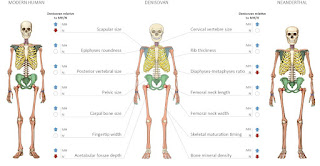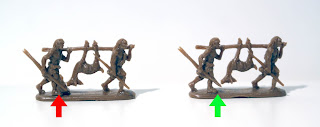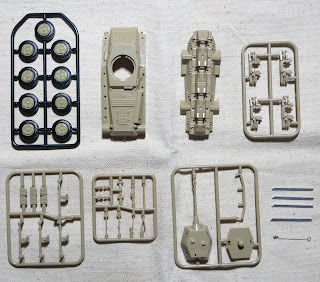I placed an order with Speira Miniatures back in April, and received the models from Sweden in July, after a lengthy stop in Illinois.
Speira has a nice range of in-house historical miniatures, but their range of fantasy miniatures all seem to be 3D files licensed from other companies. I will cover some of their historical figures in the future, but this post will primarily be about the fantasy miniatures.
The first two figures are a pair of skeletons designed by Runeforge Studios.
Like most 3D resin printed skeletons I've seen, these do not disappoint. I really think that resin 3D printing technology is ideal for making skeletons.
The next figure is a dwarf (Roteante) designed by MiniaturesOfMaddness. I requested that it be printed as an 18mm figure because I imagined it would be on the tall and bulky side in 1/72 after seeing examples posted by Sceavus.
Unfortunately, the 18mm print looks undersized to me. Rotenante looks scrawny and underfed next to the 15mm Scibor dwarf (left), and is much smaller than the Caesar dwarf (right).
Next are three female figures – Elena, Aline the Bold, and a Female Warrior, all designed by Artisan Guild. I have to admit that I'm not a big fan of the Artisan Guild models. Overall, their models seem to be influenced by a kind of WoW video game aesthetic that is too cartoony for my tastes.
With respect to these figures, the proportions seem off, and the first two poses are overly exaggerated. Still, I'm guessing they'll look okay after being painted up.
The final miniatures are lamassu terrain pieces, which I believe are in-house 3D designs by Speira.
The bull-type lamassu measures 54mm to the highest point.
The lion-type lamassu measures 60mm to the highest point.
I ordered the lamassu statues because they brought back faded memories from the 90s, of a fantasy diorama that I saw at the now closed Aero Hobbies in Santa Monica.
Notables from the D&D world associated with Aero Hobbies included the owner, Gary Switzer, and the renowned J. Eric Holmes who bought his first D&D rulebooks there. Of course, by the time I visited the store, the kid at the register didn't even know what Demogorgon was.
Now that I think about it, I probably should have ordered the 28mm prints, because I seem to recall that the pieces at Aero Hobbies were larger than these 1/72 prints (but it could just be my imagination). In any event, having something closer to the scale of the lamassu that are part of the Gate of All Nations would look quite impressive.
On a side note, about 20 miles due west from Aero Hobbies, you will find a shopping center known as the Citadel Outlet, which has several lamassu incorporated into its architecture. It is said to be based on the palace of the Assyrian ruler Sargon II, and quite eye-catching as you pass by on the freeway.
 |
| City of Commerce |

















































































